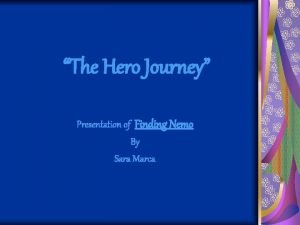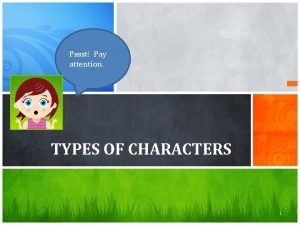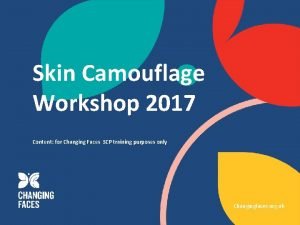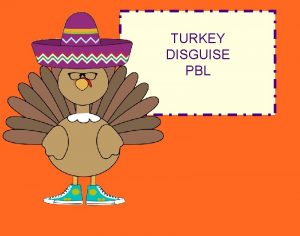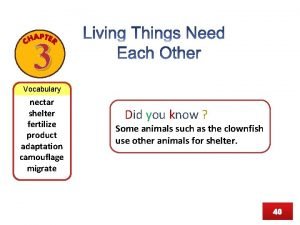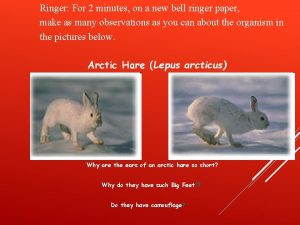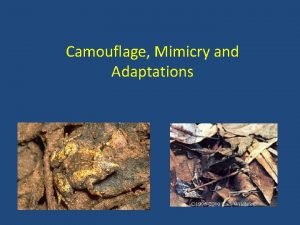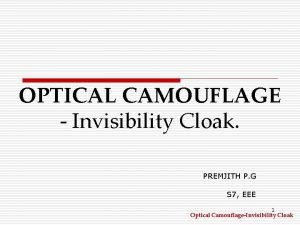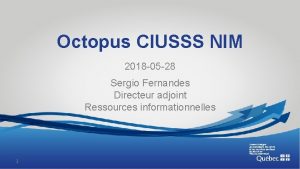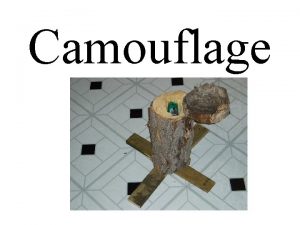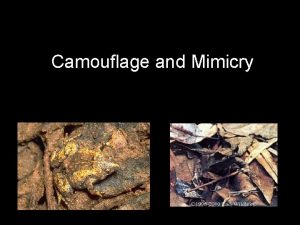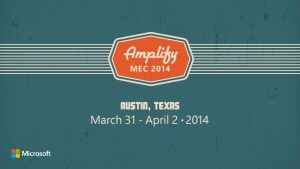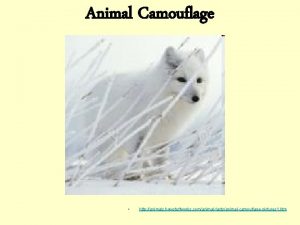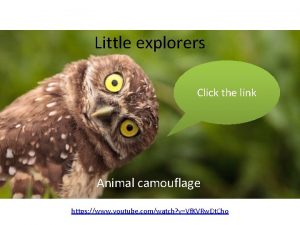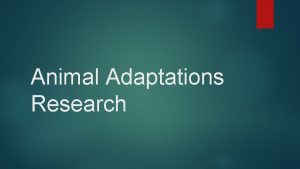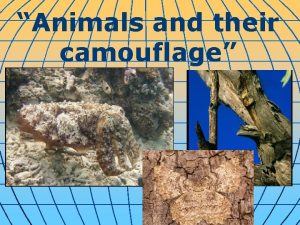Finding Dory Study Animal Study Octopus Camouflage themselves



















- Slides: 19

Finding Dory Study Animal Study

Octopus Camouflage themselves • Master Escape Artist • Playful behaviors • Color changing cells called chromatophores and they can blend into environment.

Beluga Whales White Color and live in chilly Waters of the Artic and subartic -five inch think layer of blubber -search fro fish and invertbrates to eat They make variety of sounds Like whistles, squeals, moos, crips Bones in neck are not fused Together.

False clown anemonefish • Surprise ! Nemo and Marlin are not clownfish. • They are immune to the sting of sea anemones and have developed a symbiotic relationship with them. • https: //pbs. twimg. com/profile_images/30546 26055/6 e 038 e 6 d 0 fdfd 4 e 44 bece 858 ebca 7385. jpeg

Whale sharks • • • Biggest fish in the world Can grow up to 40 feet long Can weigh 20, 000 - 40, 000 pounds Eat plankton http: //3. bp. blogspot. com/_oen 0 KDu 2 p_g/Sw Nck 0 H 2 p. PI/AAAAAF 0/GCl. C 8 ju 4 q. KE/s 160 0/Whale-Shark-Mouth. jpg

Ocean (Marine )Animals Bright yellow tailfins Royal blue body Eat zooplankton They have sharp spines near their tails for defense. http: //www. microscopyuk. org. uk/micropolitan/fresh/ arthropod/Crustaceans. jpg Blue Tang

Marine BIOMES • • CORAL REEF – GREAT BARRIER REEF COAST OF AUSTRALIA LARGEST DISPLAY OF DIVERSITY http: //3. bp. blogspot. com/_oen 0 KDu 2 p_g/Sw Nck 0 H 2 p. PI/AAAAAF 0/GCl. C 8 ju 4 q. KE/s 160 0/Whale-Shark-Mouth. jpg

SYMBIOTIC RELATIONSHIPS • PREDATION – BARRACUDA EATS CORAL • COMMENSALISM- CLOWNFISH AND ANEMONE • MUTUALISM – MICROBES AND CORALS, TUBEWORMS, MUSSELS • PARASITES – CRAB AND BARNACLE, ISOPODS OR FISH LICE, AMOEBAS AND WORMS

OCEAN FOOD CHAIN

OCEAN FOOD CHAINS

OCEAN FOOD CHAIN

OCEAN FOOD WEB

Food Web/Energy Pyramid • The flow of energy in an environment can be represented using the following diagrams: Food webs • ● describes the organisms in a particular ecosystem found in interconnecting food chains using pictures or words and arrows. • ● Food webs describe the complex patterns of energy flow in an ecosystem by modeling who consumes whom or what. • Energy pyramids • ● a graphical representation of the energy flow in an ecosystem. • ● The amount of energy that moves from one trophic level to another in an energy pyramid is not the same. • ● Energy availability decreases as it moves up the energy pyramid. The most energy is available at the producer level of the pyramid.

Communities • Communities – ● All the different populations in a specific area or region at a certain time. – ● Communities involve many types of interactions among the populations. – ● Some of these interactions involve the obtaining and use of food, space, or other environmental – resources. – ● Example – all of the living organisms (biotic factors) in the environment with the white tail deer, – including pine trees, grass, squirrels, moss, mushrooms, and Carolina wrens.

Ecosystems – ● One or more communities in an area and the abiotic factors, including water, sunlight, oxygen, temperature, and soil is an ecosystem. – ● Example – all of the living organisms (biotic factors) in the environment with the white tail deer, including pine trees, grass, squirrels, moss, mushrooms, and Carolina wrens as well as all of the abiotic (non-living) factors such as rivers, soil, air, and rocks

Biomes – ● Individual ecosystems grouped together according to the climate, the predominant vegetation, and – characterized by adaptations of organisms to that particular environment. – ● Example – the temperate deciduous forest that the white tail deer lives in.

Climate • ● temperature and amount of rainfall in a particular environment. • ● Changes in temperature and the amount of rainfall from what is normal for that area can change an environment, which will have an effect on the populations in the area.

Natural Hazards • ● any naturally occurring event that has an effect on the ecosystem. • Examples include but are not limited to floods, hurricanes, and wildfires. • ● For example, the heat and smoke generated during a wildfire can influence seed germination in some plant species.

Limiting factors – ● A limiting factor is anything that prevents a population from growing larger. – ● The maximum number of organisms that can survive in a particular ecosystem is known as the carrying capacity. – ● Limiting factors can be biotic (food and predators) and/or abiotic (soil quality and water supply).
 What is camouflage
What is camouflage Finding dory hero's journey
Finding dory hero's journey Is shrek a dynamic character
Is shrek a dynamic character Dory zidon
Dory zidon Syphilis transmission
Syphilis transmission Pablo picasso portret dory maar
Pablo picasso portret dory maar Changing faces skin camouflage
Changing faces skin camouflage What is the difference between mimicry and camouflage
What is the difference between mimicry and camouflage Disguise a turkey pig
Disguise a turkey pig Camouflage army vehicle goes missing figurative language
Camouflage army vehicle goes missing figurative language Animal adaptations
Animal adaptations Camouflage animals
Camouflage animals What is camouflage
What is camouflage Boycott past tense
Boycott past tense Optical camouflage
Optical camouflage Vertical integration
Vertical integration Octopus automatic release creation
Octopus automatic release creation Octopus shape poem
Octopus shape poem Octopus api examples
Octopus api examples Octopus ciusss
Octopus ciusss

